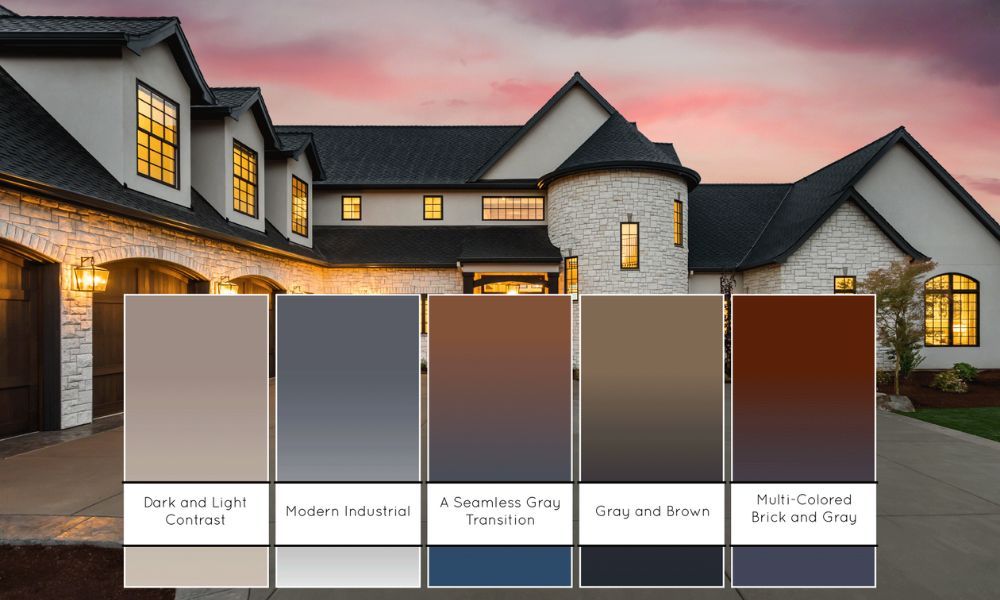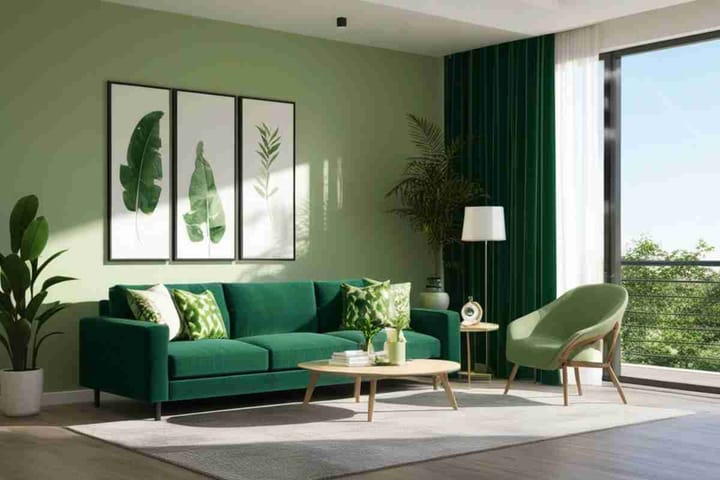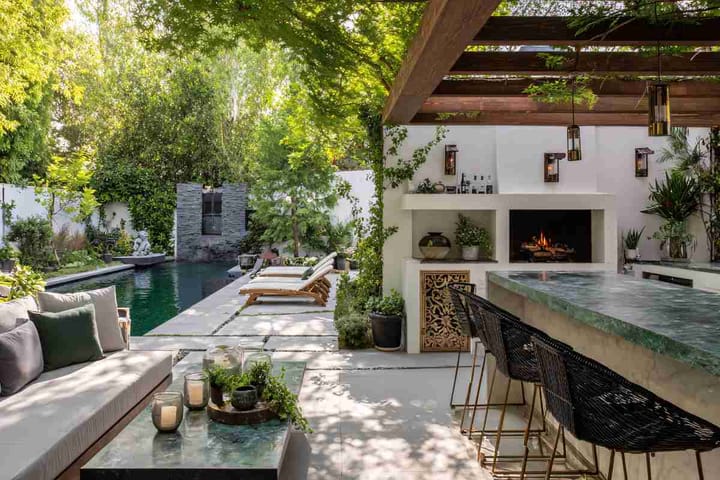How to Match Your Roof with Your Home's Exterior for a Cohesive Look
Create a harmonious look between your roof and home exterior. This guide helps you match your roof with your unique style for a cohesive and visually appealing result.

Your home is your castle, and every part of it should reflect your unique style and personality. This includes your roof, which often plays a significant role in the overall aesthetic appeal of your home. However, matching your roof with your home's exterior for a cohesive look can be a daunting task. This guide is designed to help you navigate this process and create a seamless visual harmony between your roof and the rest of your home.
When it comes to home exteriors, the roof is often an overlooked component. Many homeowners focus primarily on paint color, siding, and landscaping, forgetting that the roof can be a significant aspect of their home's exterior design. It's not just about practicality and protecting your home from the elements. The right roof can tie your home's look together, enhancing its curb appeal, and potentially increasing its value.
1. Understanding Your Home's Architectural Style
The first step in matching your roof with your home's exterior is understanding your home's architectural style. Different styles have distinct roofing requirements. For instance, a Mediterranean-style home might look best with clay tiles, while a modern home might suit a metal roof.
The best roofing shingles can achieve various architectural styles. Architectural asphalt shingles are versatile, complementing styles like Colonial, Tudor, and Craftsman homes. Cedar shingles add rustic charm, ideal for Colonial, Cape Cod, or Arts and Crafts-inspired cottages. Natural slate suits elegant Victorian, Georgian, and Gothic styles. Standing seam metal roofs are modern for contemporary and industrial architecture.
Clay or concrete tiles match Mediterranean and Spanish designs. Synthetic slate is affordable for Colonial and European aesthetics, while metal shakes suit rustic or craftsman styles. Solar roof shingles seamlessly integrate with traditional asphalt, and fiber cement shingles mimic wood for coastal and contemporary designs. Composite wood shingles offer sustainability. Choosing based on architecture, durability, and local climate is crucial, with professional guidance recommended.
2. Picking the Right Color
Choosing the right color for your roof is as crucial as selecting the right roofing material. The color should complement the overall color scheme of your home's exterior. If your home's exterior has warm colors like reds, yellows, or browns, you might want to go for a roof in a similar color family. Similarly, if your home has a cooler color palette with blues, grays, or greens, a roof with cooler undertones would be a good choice.
Choosing the right roof color involves several key considerations. Factor in your home's architectural style, climate, and exterior color scheme. Be mindful of local regulations and homeowners association (HOA) guidelines, and consider the resale value by opting for neutral, timeless colors.
Energy efficiency can be enhanced with cool roofing materials and lighter shades, while personal preference plays a crucial role in satisfaction. Take into account maintenance requirements, and assess how the chosen color complements or contrasts with neighboring roofs. Testing samples on your roof can provide a better understanding of the color's appearance in different lighting conditions.
3. Engaging Residential Roofers
Once you've got an idea of what you want, it's time to engage professional residential roofers. These experts have a wealth of knowledge and experience that can prove invaluable in your quest to achieve a cohesive look. They can provide you with advice and recommendations on the best roofing materials and colors to match your home's exterior.
A professional roofer can also assess your home and provide you with options that not only look good but also offer the best protection for your specific location and climate. They have the expertise to understand how various roofing materials will perform and age over time, which is crucial when choosing a roof that will look good and last for years to come.
Common roof leak areas to be aware of include flashing around chimneys, skylights, and vents, as well as valleys where two roof slopes meet. Water can also seep in through damaged shingles, clogged gutters, or worn sealant around penetrations. A professional roofer will inspect these vulnerable spots to ensure any underlying issues are addressed before finalizing your roofing plan.
4. Considering Roofing Contractors
When selecting roofing contractors, there are a few key things to consider. The first is their level of experience. You want a contractor who has worked with a wide variety of roofing materials and has extensive knowledge about different architectural styles.
Secondly, take the time to review their portfolio of previous work. This can give you a good idea of the quality of their work and whether they have experience with homes similar to yours.
Lastly, a good roofing contractor should be able to provide you with references from past clients. Take the time to reach out to these references to get an understanding of the contractor's reliability, professionalism, and quality of work.
5. Maintenance and Longevity
Remember that maintaining a cohesive look between your roof and your home's exterior also involves considering the longevity and maintenance requirements of your chosen roofing material. Some materials, like slate or metal, can last for decades with minimal maintenance, while others, like asphalt shingles, may need more regular upkeep.
6. The Importance of Consistency
Consistency is vital when striving for a cohesive look. If your home's exterior features a rustic, old-world charm, a sleek, modern roof might look out of place. On the contrary, a traditional roof might clash with a contemporary home design. Consistency in style between the roof and the home's exterior helps create a harmonious look that is visually pleasing.
7. The Role of Landscape
Don't forget to factor in your landscape when matching your roof with your home's exterior. The colors and style of your roof should also harmonize with your yard and the surrounding natural beauty. If you live in a lush, green area, a roof color that complements the greenery can make your home blend seamlessly with its environment. Similarly, in a more arid region, a roof that mirrors the tones of the desert can help your home fit perfectly into its surroundings.
8. The Climate Factor
Your local climate should also be a consideration when matching your roof to your home's exterior. Certain roofing materials perform better in specific climates, and their color can influence their efficiency. For instance, lighter colors reflect sunlight and are ideal in warmer climates, while darker roofs absorb heat and are suitable for cooler regions.
9. Consultation and Planning
A crucial piece of advice is to consult and plan thoroughly. Don't rush the process. Take your time to explore various options, consult with professionals, and plan ahead. This process ensures that the final result is a roof that matches seamlessly with your home's exterior, creating a harmonious and aesthetically pleasing look.
10. The Final Touch
Lastly, remember that the goal is to make your home look and feel like a cohesive unit, with each part contributing to the overall aesthetic. Your roof is not an afterthought but an integral part of your home's design. Choose wisely, and your roof can become the final touch that brings your home's look together, creating a cohesive, attractive aesthetic that you will love for years to come.
To sum up, matching your roof with your home's exterior for a cohesive look is an art. It requires a keen eye for detail, an understanding of your home's architectural style, the right choice of roofing materials and colors, and, crucially, the help of experienced professionals. With these key elements in mind, you can create a home exterior that is not only practical and protective but also beautifully coordinated and eye-catching. After all, your home is more than just a place to live — it's a reflection of your personal style and taste.




Comments ()